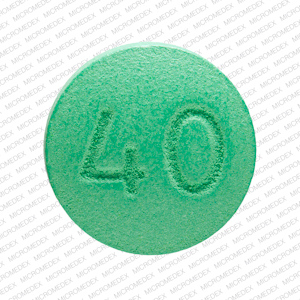Uloric Disease Interactions
There are 4 disease interactions with Uloric (febuxostat).
Antihyperuricemic agents (applies to Uloric) secondary hyperuricemia
Major Potential Hazard, Moderate plausibility. Applicable conditions: Tumor Lysis Syndrome, Lesch-Nyhan Syndrome, Organ Transplant
No studies with febuxostat or lesinurad have been conducted in patients with secondary hyperuricemia (including organ transplant recipients). The use of these drugs is contraindicated in patients where the uric acid formation is greatly increased, such as patients with malignant disease, tumor lysis syndrome or Lesch-Nyhan syndrome.
Antihyperuricemic agents (applies to Uloric) CV disease
Moderate Potential Hazard, Moderate plausibility. Applicable conditions: Cardiovascular Disease
Major adverse cardiovascular events (cardiovascular deaths, non- fatal myocardial infarctions and non- fatal strokes), were reported during clinical trials with some antihyperuricemic agents, such as febuxostat and lesinurad. Although a causal relationship has not been established, caution is advised when used in patients with cardiovascular disease. Monitoring for signs or symptoms of myocardial infarction or stroke is recommended.
Febuxostat (applies to Uloric) renal dysfunction
Moderate Potential Hazard, Moderate plausibility.
There are insufficient data on the use of febuxostat in patients with severe renal impairment (ClCr less than 30 mL/min), therefore caution should be exercised on these patients. No dose adjustment is needed in patients with mild or moderate renal impairment.
Febuxostat/lesinurad (applies to Uloric) hepatic impairment
Moderate Potential Hazard, Moderate plausibility. Applicable conditions: Liver Disease
No studies have been conducted in patients with severe hepatic impairment (Child-Pugh Class C), therefore caution should be exercised if using febuxostat or lesinurad on these patients. No dose adjustment is necessary in patients with mild or moderate hepatic impairment.
Switch to professional interaction data
Uloric drug interactions
There are 48 drug interactions with Uloric (febuxostat).
More about Uloric (febuxostat)
- Uloric consumer information
- Check interactions
- Compare alternatives
- Pricing & coupons
- Reviews (47)
- Drug images
- Side effects
- Dosage information
- During pregnancy
- Generic availability
- FDA approval history
- Drug class: antihyperuricemic agents
- Breastfeeding
- En español
Related treatment guides
Drug Interaction Classification
| Highly clinically significant. Avoid combinations; the risk of the interaction outweighs the benefit. | |
| Moderately clinically significant. Usually avoid combinations; use it only under special circumstances. | |
| Minimally clinically significant. Minimize risk; assess risk and consider an alternative drug, take steps to circumvent the interaction risk and/or institute a monitoring plan. | |
| No interaction information available. |
See also:
Further information
Always consult your healthcare provider to ensure the information displayed on this page applies to your personal circumstances.


